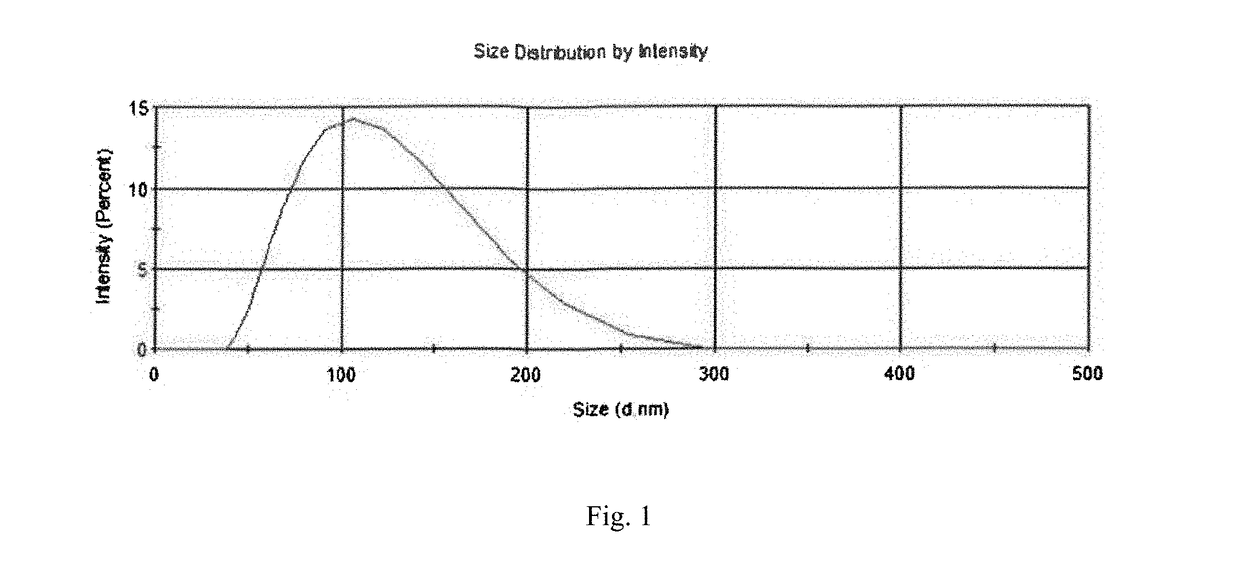Functionalization of carbon for embedding in chalcogen particles to enhance electronic conductivity
- Summary
- Abstract
- Description
- Claims
- Application Information
AI Technical Summary
Benefits of technology
Problems solved by technology
Method used
Image
Examples
example 1
Functionalization of Conductive Carbon Black
[0060]Ketjen Black® (1.25 g, ECP600jd, LION) was added to a 1 L conical flask with distilled water and nitric acid (250 ml, HNO3, 70%, Sigma-Aldrich). This acidic solution was stirred at 600 rpm for three days. During stirring, the temperature of the conical flask was heated up and maintained at 70° C. After three days, the acid-treated carbon was separated from the acidic solution by centrifugation at 12000 rpm for 1 minute. Caution should be taken during this procedure because of using reactive and corrosive acid. This treated carbon was rinsed with distilled water at least 5 times until the separation of carbon become difficult. The degree of functionalization of carbon in H2O was examined by Zeta potential (Zetasizer nano range, Malvern). The zeta potential of the functionalized carbon black particles showed −48 mV after the rinsing, and the number may correspond to the amount of carboxyl groups on carbon surface. The size of the funct...
example 2 preparation
of Polymer-Coated Sulfur Particles with Carbon Embedded in the Sulfur Core
[0063]Sodium thiosulfate (1 g, 6.32 mmol, Na2S2O3, 99%, Reagent Plus®, Sigma-Aldrich) was dissolved in distilled water (40 ml) in a 140 ml beaker. Poly(3,4-ethylenedioxythiophene)-poly(styrenesulfonate) (700 μL, PEDOT:PSS, 1.1% in H2O, high conductive grade, Sigma-Aldrich) was added in the sodium thiosulfate solution and then stirred. Oxalic acid (3.41 g, 37.9 mmol, >99.0%, Sigma-Aldrich) was dissolved in distilled water (40 ml) in a 140 ml beaker. The mole ratio of sodium thiosulfate and oxalic acid was 1:6. The functionalized carbon particles (3 mg in 1 ml of distilled water) were dispersed in the oxalic acid solution. Ascorbic acid (6.68 g, 37.9 mmol, 99%, Sigma-Aldrich) could also be used for the synthesis instead of oxalic acid. This acidic solution was poured quickly into the sodium thiosulfate solution, and the solution color turned creamy gray. The solution was stirred rapidly at 900 rpm at room temper...
example 3
Preparation of Polymer-Coated Particles Comprising Sulfur and Selenium with Functionalized Conductive Carbon Black Embedded in the Chalcogen Core
[0064]Selenium (1.2 g) was refluxed (brought to a brief boil then lowered temperature) with sodium sulfite (12 g) in 65 ml water to form NaSeSO3. Ascorbic acid (31 g) was dissolved in 140 ml water. Polymethacrylic acid (19.5 ml) and functionalized conductive carbon black (3 mg in 1 ml of distilled water), which was dissolved in an acid of choice, were mixed with the ascorbic acid solution. The resultant solution was diluted to 265 ml and mixed with the boiled solution containing NaSeSO3. The solution had a pH of 5.1 and a color of dark garnet. The solution was stirred for 24 hours during which it turned milky garnet in color.
[0065]Similar results can be obtained if oxalic acid, HCl or a 3:1 mixture of H2SO4 and HNO3 are used as acids instead of ascorbic acid. The reaction pH needs to be maintained between 4 and 6. Other polymers can be used...
PUM
| Property | Measurement | Unit |
|---|---|---|
| Percent by mass | aaaaa | aaaaa |
| Particle size | aaaaa | aaaaa |
| Particle size | aaaaa | aaaaa |
Abstract
Description
Claims
Application Information
 Login to View More
Login to View More - R&D
- Intellectual Property
- Life Sciences
- Materials
- Tech Scout
- Unparalleled Data Quality
- Higher Quality Content
- 60% Fewer Hallucinations
Browse by: Latest US Patents, China's latest patents, Technical Efficacy Thesaurus, Application Domain, Technology Topic, Popular Technical Reports.
© 2025 PatSnap. All rights reserved.Legal|Privacy policy|Modern Slavery Act Transparency Statement|Sitemap|About US| Contact US: help@patsnap.com



